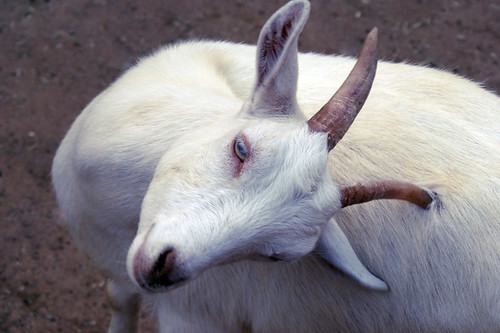 |
| CREDIT: National Geographic |
Snake venom
Source
Most snake bites are from pit vipers, which are poisonous snakes that are identified by their triangular heads, retractable fangs, and a special heat-sensing pit between the eye and nostril. North American pit vipers include five subspecies of copperheads, three subspecies of water moccasins, three subspecies of pygmy rattlesnakes, three subspecies of massauga, and at least 26 subspecies of rattlesnakes. Water moccasins and copperheads are found in the eastern United States and southward through Texas. Rattlesnakes are found throughout the contiguous United States, with the highest concentration in the south and southwest.
General Information
Snake bites tend to occur on the pet's head or neck. Bites involving the trunk of the body have a poorer prognosis. Snake bites may affect one or more body systems including the cardiopulmonary system, the nervous system, or the coagulation system. Usually, if the snake is not poisonous or the venom was not injected, the pain, swelling, and bruising at the bite site will be minimal.
Toxic Dose
Varies. Envenomation does not always occur. The severity of envenomation is related to the time of the year, the volume of venom present in the snake, the location of the bite, the number of bites, and the amount of victim movement after the bite (movement increases the spread of the venom). The amount of venom is not related to the size of the snake. Systemic signs such as kidney damage may take 24-72 hours to develop in mild envenomations, so the animal should be observed closely for several days.
 |
| SOURCE and more information |
May see one, two, or several small puncture wounds, bleeding, bruising, immediate and extremely painful swelling at the site of the bite, and tissue necrosis. The more severe systemic signs may take up to several hours to appear and include hypotension and shock, lethargy and weakness, muscle tremors, nausea, vomiting, and neurological signs including depressed respiration.
Immediate Action
Identify the snake if possible. Restrict movement of the pet. Loosely immobilize the limb in a functional position if bitten on an extremity. DO NOT incise the bite wound to aspirate the venom and DO NOT apply a tourniquet without veterinary assistance. DO NOT apply ice to the area. Seek veterinary attention.
 |
| SOURCE and more information |
Veterinary Care
General treatment: The animal will be kept quiet and the bitten area immobilized if possible to decrease the spread of the venom. The area around the wound will be clipped and cleaned.
Supportive treatment: Antihistamines may be administered and IV fluids given to help prevent low blood pressure. Oxygen is given if needed. Antibiotics are used to prevent secondary infections. Pain medication is provided as necessary. Laboratory tests to check for bleeding problems and organ damage will be performed repeatedly. Blood transfusions may be necessary in cases of severe coagulopathies. The area above and below the bite wounds may be measured every 15 minutes to monitor the edema. Nonsteroidal anti-inflammatory drugs (NSAIDs) are contraindicated in the early phase (first 24 hours) of treatment because of the different types of venom and the anticoagulant effects of NSAIDs. The use of corticosteroids may be contraindicated also, as some research shows they increase the severity of the bite.
Specific treatment: Antivenin* may be administered. The use of antivenin is controversial and is used at the discretion of the attending veterinarian. To be most effective, antivenin should be given within 4 hours of the bite. It becomes less effective as more time passes.
All snake bite victims should be observed for a minimum of 12 hours, even when there are no clinical signs. If clinical signs are present, the length of observation is increased to 48-72 hours, as damage to organs may not appear immediately.
Prognosis
A study of animals bitten by pit vipers showed that those treated with antivenin, intravenous fluids, and antibiotics had a mortality rate less than 1% and local tissue damage was rare. The mortality rate in untreated patients depended on the species of snake involved. For example, in patients bitten by the Northern Pacific Rattlesnakes, the mortality rate was about 10%. In the much more dangerous Mojave rattlesnake, it could be as high as 35%.
*Two companies, Fort Dodge and Wyeth Ayerst Laboratories produce antivenin. Veterinary clinics and human hospitals in areas that have a high population of pit vipers have this product on hand. Many owners want to carry this product with them, but because of the intravenous administration and instability of the product, it is recommended that a veterinarian give it.
Article Source (PDF): UC Davis- Animal Pharm News:"Rattlesnake Envenomation" March 2006
Written by:

Charles Jameson, DVM
Lap of Love Veterinary Hospice:
Houston location
Dr Jameson serves towns in and around Houston, TX including Galveston, Pearland, Spring, Pasadena, Missouri City, The Woodlands, Richmond, Bellaire, Kingwood, West University Place, Sugarland, Baytown, and Friendswood.
http://www.lapoflove.com



